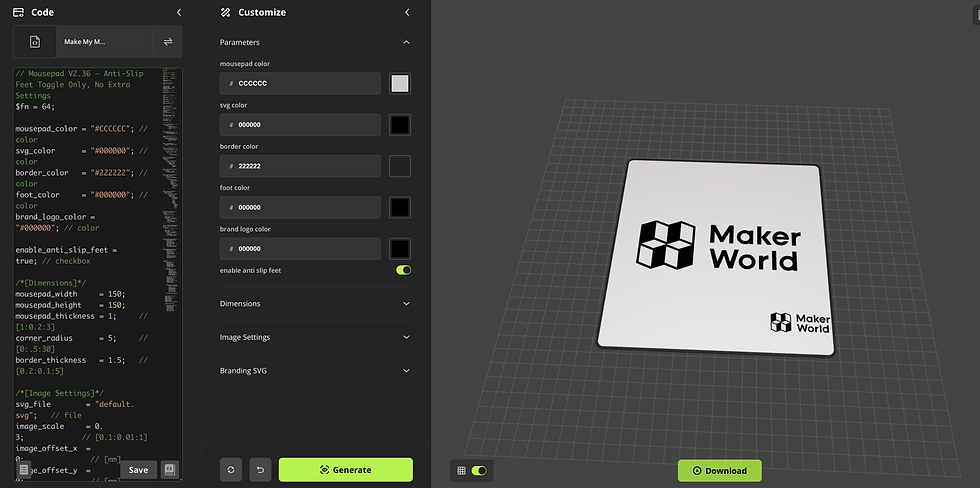How AI Can Accelerate 3D Modeling
- Riley Savoy

- Jun 3
- 2 min read

Artificial intelligence has become an increasingly useful tool in my design process, especially when creating parametric models for 3D printing. Whether you are working on a client prototype or just testing out a new idea, AI can streamline the creation of complex customizable models that would normally take hours to manually build and troubleshoot.
Recently, I worked on a parametric mousepad customizer using OpenSCAD. It started as a simple rectangular pad with rounded corners, but quickly evolved to include multiple adjustable features: dimensions, anti-slip rings, SVG logo inlays, branding, and even multi-material implementations. As the design grew more complex, AI helped manage the logic, structure, and efficiency of the code. What could have taken days of rewriting and version control was solved in real time with suggestions, error catching, and logic optimization.
What makes AI so helpful in this space is its ability to iterate rapidly. When I wanted to add optional anti-slip feet with custom insets, or update the mousepad to support border color and SVG subtraction without Z fighting, AI could help draft and correct the logic instantly. Rather than rewriting large blocks of code every time I added a feature, I used AI to test logic, generate reusable functions, and troubleshoot unexpected behavior.
The other big advantage is keeping parametric logic clean and readable. With so many inputs and options, it is easy for a model to become bloated or inconsistent. AI helped restructure my mousepad generator so it remained intuitive for others to use, even after more than thirty user-adjustable parameters had been added. This kind of rapid scripting has changed the way I approach customizable modeling. I now think in terms of feature sets, clean toggles, and reuse, instead of static shapes or fixed templates.
I still design most of my models manually, especially when I need sculptural forms or precise functional tolerances. But for customizable or user-facing models where the end result needs to adapt, AI is becoming an essential assistant. It isn't replacing my design process, but extending it.
If you are creating customizable models or want to speed up iterative design work, AI can help you move faster, cleaner, and with more flexibility than ever before. Once you learn how to work with it instead of against it, you might find it is not just helpful but it is hard to imagine modeling without it.



Comments